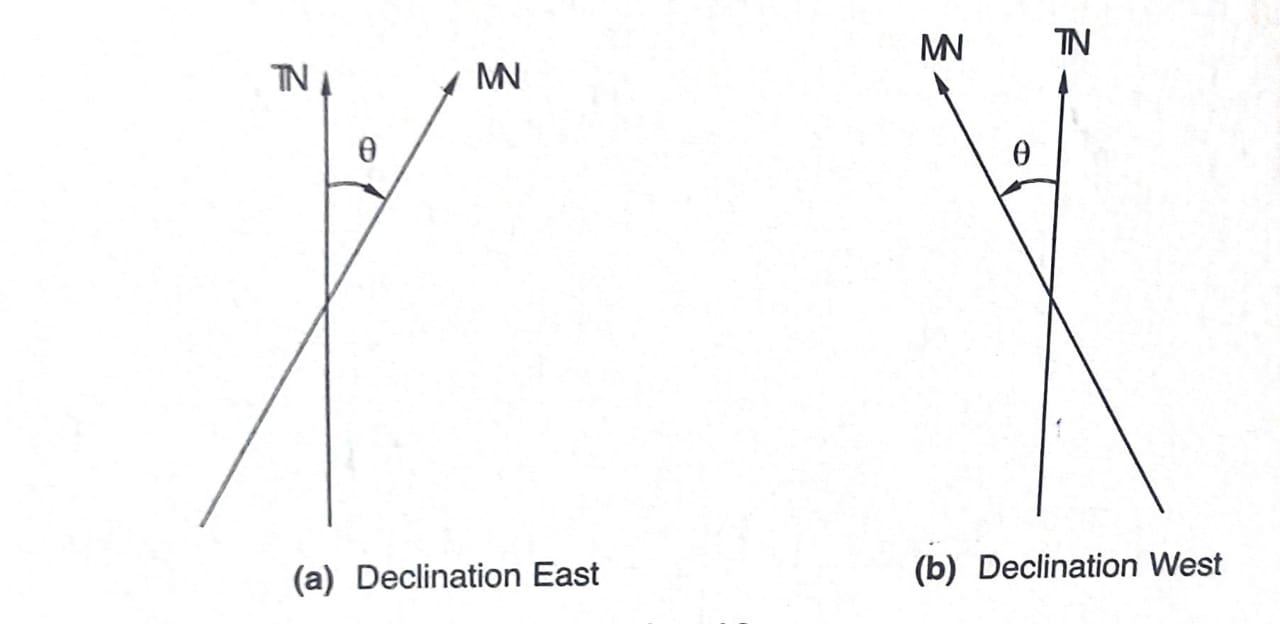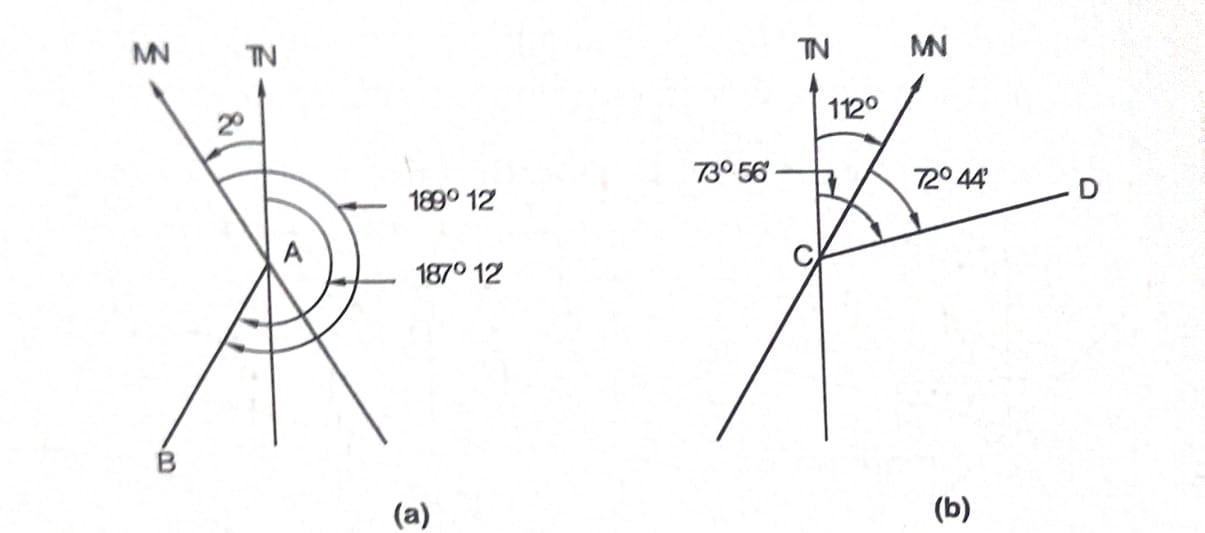MAGNETIC DECLINATION OF COMPASS SURVEYING
The horizontal angle between the magnetic meridian and true meridian is known as “Magnetic Declination”.
(a) The north end of the magnetic needle is pointed towards the east side of the true meridian, the position is termed ‘Declination East .
(b) The north end of the magnetic needle is pointed towards the west side of the true meridian, the position is termed ‘Declination west’

VARIATIONS IN MAGNETIC DECLINATION:
The changes in magnetic declination is called variations in Declination. The change in the direction of magnetic meridian is termed as magnetic variation. Types of variations are discussed below.
1. Secular Variation: This is the variation in the magnetic meridian over a number of years. The magnetic meridian swings like a pendulum and changes the direction in 150- 200 years.
2. Annual Variation: Even during a year, the magnetic needle will not show the same direction and there will be a deviation about 1 to 2 minutes from its mean position.
3. Diurnal Variation: This is the variation in the position of the magnetic needle during a day. This may be upto about 10 to 12 minutes and depends on various factors, like the season of the year, the time of the day, etc.
4. Irregular Variation: This is due to magnetic stroms which may occure at any time. The variation depends on the intensity of stroms. Example for magnetic stroms are earthquakes, volcanic erruptions etc.the relation between the true bearing and magnetic bearing can be expressed by the following equations.
True bearing Magnetic bearing + Declination
[Use + sign when Declination’East]
[Use-sign when Declination West]
Magnetic bearing True bearing + Declination
[Use + sign when Declination West]
[Use sign when Declination East]
Note: The above rules applies to only WCB. Therefore, when the quadrantal bearings are given they should be converted to their equivalent WCB, before applying the corrections
TAKE A EXAMPLE:
Find the true bearing of the lines with the following observed magnetic bearings and declinations.
(a) Bearing of line AB = 189 ° 12′ Declination = 2° W
(b) Bearing of line CD =72° 44′ Declination =1° 12′ E

SOLUTION:
(a) True bearing of line AB =Magnetic bearing of line AB – Declination (West)
= 189 ° 12′ – 2° 00′
= 187 °12′
(b) True bearing of line CD = Magnetic bearings of line CD +Declination East
= 72°44′ + 1° 12′
= 73°56′
